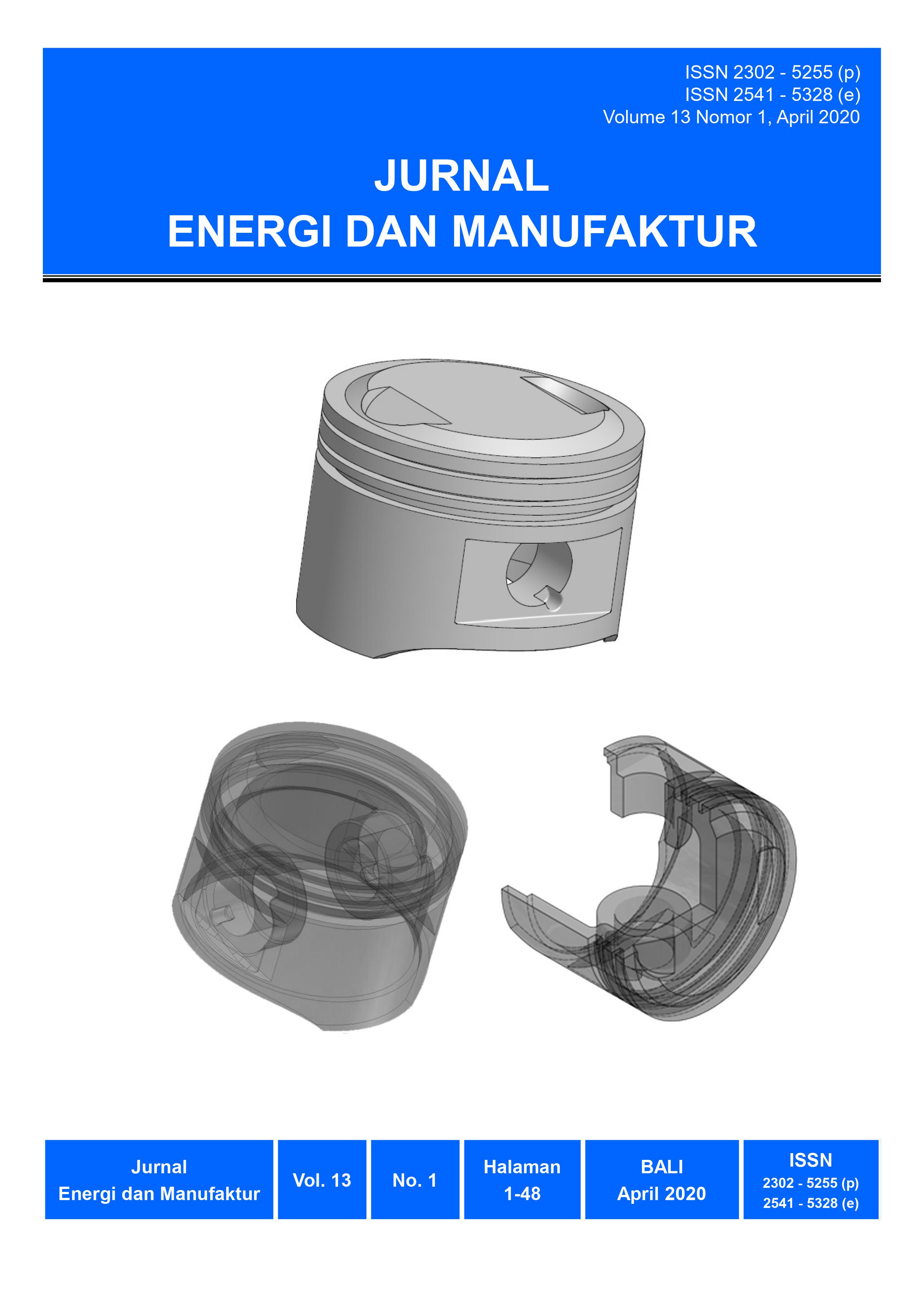Densitas dan Kegagalan Produksi pada Proses Produksi Genta Bali
Abstract
Proses pembuatan lonceng tradisional berbahan perunggu dilakukan dengan proses pengecoran. Bahan yang biasa digunakan dalam produksi lonceng tradisional adalah paduan perunggu denganperbandingan persentase tembaga (Cu) 80% dan timah (Sn) 20%. Paduan ini memiliki sifat mekanik dan akustik yang lebih baik dibandingkan dengan kuningan. Tujuan dari penelitian ini adalah untuk menentukan karakteristik kepadatan dan cacat cor dalam proses produksi lonceng tradisional. Paduan perunggu dilebur dalam tungku crucible pada temperatur tuang 1000, 1050, 1100 °C. Paduan yang telah mencair dituang ke dalam cetakan permanen yang telah dipanaskan terlebih dahulu pada temperatur 200, 300, 400°C. Billet hasil coran dipotong-potong dan dimanufacturing untuk pembuatan spesimen uji densitas dan porositas. Hasil penelitian menunjukkan bahwa variasi temperatur penuangan mempengaruhi densitas dan cacat hasil coran. Semakin tinggi temeratur tuang berdampak pada semakin banyak cacat yang terjadi, terutama cacat-cacat porositas. Porositas material yang lebih kecil berpengaruh pada kualitas akustik yang lebih baik.
The process of making traditional bells made of bronze alloys is a casting process. Materials commonly used in the production of traditional bells are bronze with a percentage of copper (Cu) of 80% and tin (Sn) of 20%. This alloy has better mechanical and acoustic properties compared to brass. The purpose of this study was to determine the characteristics of density and cast defects in the traditional bell production process. The bronze alloy was melted in a crucible furnace at a temperature of 1000, 1050, 1100°C. The melted alloys were poured into a permanent mold that has been heated at a temperature of 300°C. Castings billets were cut into pieces and manufactured for making density and casting defect test specimens. The results showed that the variation of the pouring temperature affected the density and casting defects. The higher the pouring temperature has an impact on the more cast defects, especially the porosity of the cast. Low porosity affects better acoustic quality.
Downloads

This work is licensed under a Creative Commons Attribution-NonCommercial-ShareAlike 4.0 International License.









